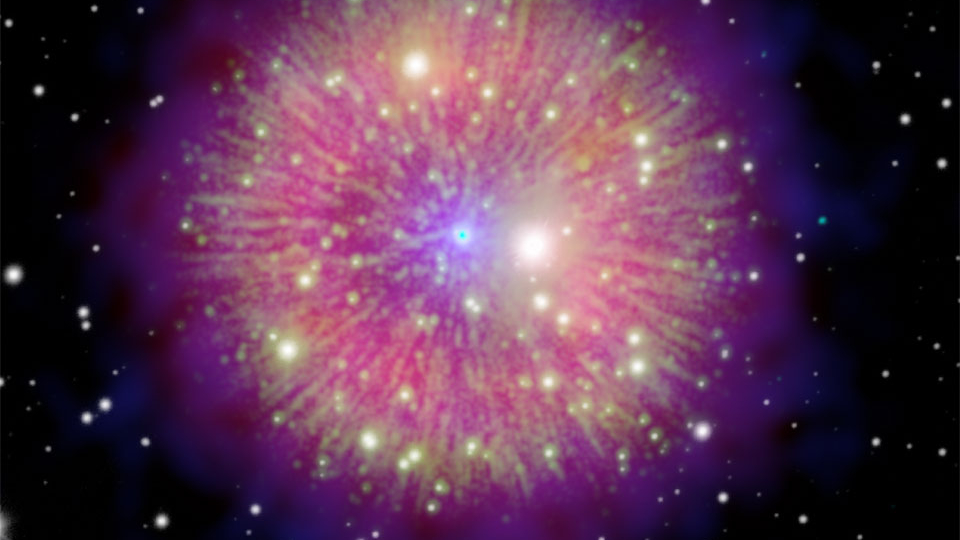Peer inside remnants of an 800-year-old supernova and see a 'zombie' star
Baby, you're a firework.

In the year 1181, an extraordinarily bright supernova lit up the night sky like a firework for an incredible 185 consecutive days. Astronomers have since located its remnants within the constellation Cassiopeia and imaged it — appropriately, it looks like a giant firework.
NASA's Chandra X-ray Observatory released this new composite image of SNR 1181 that combines data across the electromagnetic spectrum. That data was collected from various Earth- and space-based observatories: ESA's XMM-Newton, NASA's Wide-field Infrared Space Explorer, the MDM Observatory in Arizona and Pan-STARRS in Hawaii.
The image shows a spherical nebula some 16 light-years across, centered around a tiny, but bright, star shown in aqua. (X-rays are shown in blue and cyan, infrared light in pink and red, and optical light in white and green.) This extremely hot white dwarf star likely formed during the supernova of 1181. Scientists suspect the star was formed when two white dwarf stars merged in a powerful thermonuclear explosion — a special kind of supernova called a sub-luminous Type Iax event — but the explosion was incomplete.
Related: The Chandra X-ray spacecraft may soon go dark, threatening a great deal of astronomy
Typically, when two stars merge in such explosive fashion, no remnants exist. But because this explosion was incomplete, a "zombie" star was left behind, along with the nebula surrounding it. The star is one of the hottest in the Milky Way at about 200,000 degrees Celsius (360,032 degrees Fahrenheit), with stellar wind emanating from it at speeds up to 16,000 km/s (9,942 mi/s).
While we say this is an 800-year-old supernova remnant, we mean that's how long ago we first saw it in the night sky. But because it's about 10,100 light years away, the supernova actually occurred some 10,900 years ago — it just took that long for its light to reach us.
In any case, it's pretty cool to see an event our ancestors observed all those centuries ago.
Get the Space.com Newsletter
Breaking space news, the latest updates on rocket launches, skywatching events and more!
Join our Space Forums to keep talking space on the latest missions, night sky and more! And if you have a news tip, correction or comment, let us know at: community@space.com.

Space.com contributing writer Stefanie Waldek is a self-taught space nerd and aviation geek who is passionate about all things spaceflight and astronomy. With a background in travel and design journalism, as well as a Bachelor of Arts degree from New York University, she specializes in the budding space tourism industry and Earth-based astrotourism. In her free time, you can find her watching rocket launches or looking up at the stars, wondering what is out there. Learn more about her work at www.stefaniewaldek.com.









